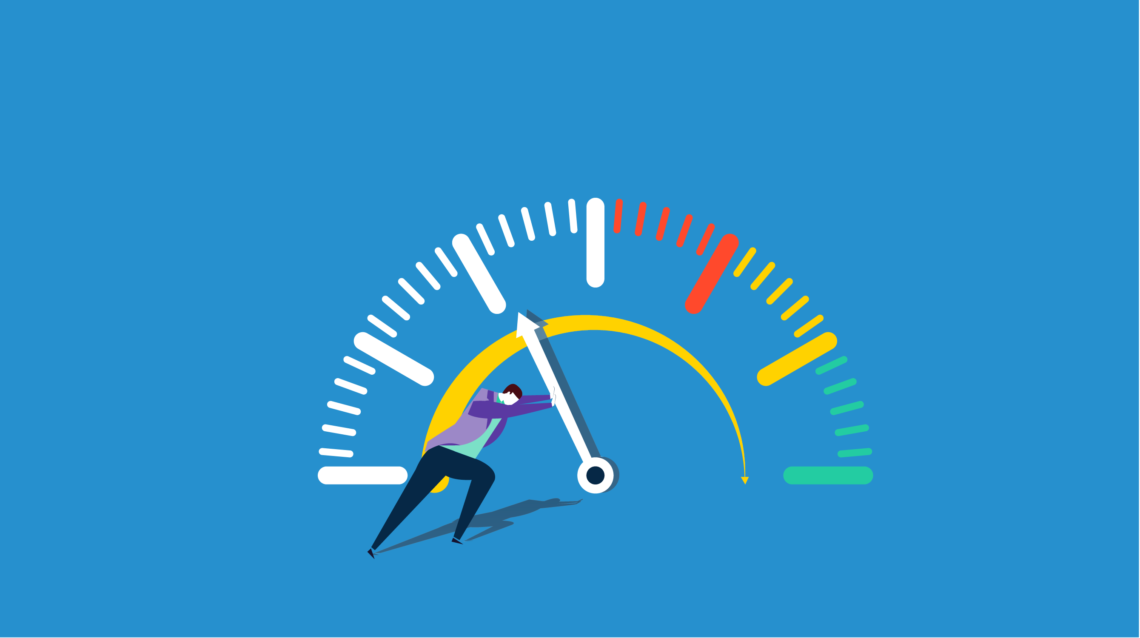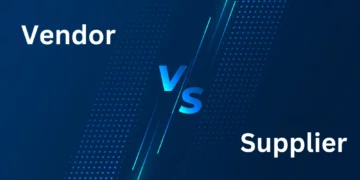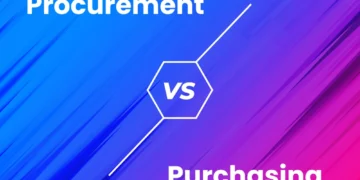Last Updated on November 28, 2025
Procurement KPIs
Procurement is the critical process of obtaining goods and services from external sources. With the procurement software market size projected to reach USD 9.5 Billion by 2028, it’s clear that companies are investing in technology to streamline procurement processes. And KPIs are vital to this process as they ensure organizations strive to achieve what they forecasted previously.
Tracking KPI metrics allows you to gain insights into the effectiveness of your procurement activities. This guide looks at 10 KPIs to help you measure your procurement process’s success and identify improvement areas. So, let’s get started.
What are procurement KPIs?
KPI stands for Key Performance Indicator, a measurable value demonstrating how effectively an organization achieves its goals. In the context of procurement, KPIs are metrics that measure the performance of the procurement process and its impact on the organization’s bottom line.
Depending on your organization’s specific goals and priorities, you can track various KPIs for the process optimization. Some common procurement key performance indicators include cost savings, supplier performance, on-time delivery, and inventory management.
Analyzing your procurement spend and identifying opportunities for overall cost management will help your organization achieve its financial goals and improve profitability.
Also, Read: Sourcing vs Procurement
Importance of measuring procurement KPIs
Here are some key reasons you need to measure procurement KPIs:
1. Identifying areas for improvement
You can identify areas where your procurement process is falling short and take steps to address these issues. For example, you may consistently miss your on-time delivery targets. You can work with your suppliers to improve their delivery times or look for alternative suppliers who can meet your needs timely.
2. Demonstrating the value of procurement
Measuring procurement KPI metrics can help you demonstrate your procurement activities’ financial and strategic value to the decision-makers. It will also allow you to gain support for your procurement initiatives and secure the resources you need to succeed.
3. Improving supplier relationships
KPIs like supplier performance can help identify areas where your suppliers fall short. You can work with them to improve their performance. Strengthening your relationships with suppliers will ensure they meet your needs. It will allow you to minimize the risk of disruptions to your supply chain and improve the quality of services you receive.
4. Minimizing risk
Measuring KPIs related to inventory management can help identify areas where you’re carrying excess inventory or experiencing stockouts. Optimizing your inventory levels and ensuring you have the right products at the right time can minimize the risk of lost sales or excess carrying costs.
Recommended Read: What Is Strategic Procurement?
Benefits of measuring procurement KPIs
Here are some advantages of tracking and analyzing procurement metrics:
1. Cost savings
Track metrics like purchase price variance and supplier performance to identify opportunities to negotiate better prices with your suppliers. Furthermore, it will help reduce total spend and improve your organization’s bottom line.
2. Improved supplier relationships
Measure KPIs like supplier performance to identify areas where your suppliers fall short. You can then focus on building collaborative relationships with your suppliers to reduce the risk of supply chain disruptions.
3. Increased efficiency
Measure KPIs like resource utilization to identify procurement process bottlenecks and streamline workflows. Improving process efficiency will allow you to reduce the time and resources required to complete procurement tasks. It will free up time and resources for other important initiatives.
4. Better decision-making
Measure KPIs like delivery time to gain valuable insights that can promote improved decision-making. Analyzing procurement data and identifying trends will help you decide better about supplier selection, contract negotiation, and other key procurement activities.
5. Improved risk management
Measure KPIs related to inventory management to identify instances of excess inventory or stockouts. Optimizing your inventory levels will ensure you have adequate supplies at all times.
Quick Read: What is Spend Analytics in Procurement?
10 Procurement KPIs that should be a part of the evaluation process
Here’s a list of 10 procurement KPIs you can include in your evaluation process:

1. Supplier lead time
Supplier lead time measures the time it takes for a supplier to deliver goods from when an order is placed.
Importance:
The supplier lead time KPI directly impacts your organization’s ability to meet customer demand and fulfill orders on time. If your supplier lead time is too long, you may experience delays in receiving the goods or services you need to fulfill customer orders. It will result in product shortages, lost sales, and reduced customer satisfaction.
Measuring supplier lead time:
Track the time between when you place an order with a supplier and when the goods or services are delivered. Use manual tracking or an automated system. You can use the information to identify areas where supplier availability can be improved.
2. PO cycle time
Purchase order cycle time is the time it takes to process a purchase order from when it is created to when it is fulfilled. The ordering process includes all the steps in the procurement process, from requisition to approval to purchase order creation to order fulfillment.
Importance:
The purchase order cycle time directly impacts your organization’s ability to manage inventory levels and meet customer demand. If the cycle time is too long, it may result in excess inventory or stockouts. It can lead to lost sales, reduced customer satisfaction, and increased procurement costs.
Measuring purchase order cycle time:
Measure the time difference between the placement and fulfillment of a purchase order. You can do it using various methods, including manual tracking or an automated system. Use the data to identify areas where your procurement process is experiencing bottlenecks and take steps to streamline and optimize the process.
For example, you may notice purchase orders take too long to approve. You may need to revise your approval process or delegate authority to reduce the time needed to approve a purchase order.
Also, Read: What is Source-to-pay (S2P)?
3. Vendor availability
Vendor availability measures the percentage of time that a particular vendor can fulfill your organization’s purchase orders. It reflects the vendor’s ability to meet your organization’s procurement needs and maintain a reliable supply chain.
Importance:
Vendor availability affects your organization’s ability to meet customer demand, manage inventory levels, and maintain a competitive edge. If a vendor is frequently unavailable or unable to fulfill your orders, it can lead to stockouts, missed deadlines, and lost sales. These can negatively impact your organization’s bottom line.
Measuring vendor availability:
Track the number of times a vendor can fulfill your purchase orders over a set period, typically a month or a quarter. You can then calculate the percentage of orders that were fulfilled by the vendor compared to the total number of orders placed.
You can use this information to identify vendors that consistently struggle to meet your procurement needs and take steps to improve their performance. For example, you may need to negotiate a better contract with the vendor or look for alternative suppliers to provide more reliable and consistent service.
4. Cost per invoice and PO
Cost per invoice and purchase order measure the cost of processing a single invoice or purchase order. This cost-saving KPI includes all the costs associated with the procurement process, like labor, materials, and overhead.
Importance:
If the cost per invoice or purchase order is too high, your procurement process may be inefficient, costing your organization more money than necessary.
Measuring cost per invoice and purchase order:
Track labor, materials, and overhead costs when processing an invoice or purchase order. You can divide the total cost by the number of invoices or purchase orders processed during a set period.
Identify areas where your procurement process is experiencing inefficiencies and take steps to optimize the process. For example, you notice the cost per invoice or purchase order is high due to manual data entry or approval delays. You should implement an automated system or streamline your approval process to reduce costs.
Quick Read: How to Form a Successful Procurement Plan?
5. Compliance rate
Compliance rate measures the percentage of procurement activities compliant with internal policies and external regulations. It includes compliance with ethical, legal, and environmental standards.
Importance:
The compliance rate KPI ensures your procurement process is aligned with your organization’s values and goals. Furthermore, it guarantees you are operating in a way that is ethical and compliant with applicable laws and regulations. Non-compliance can lead to legal and reputational risks, ultimately harming your organization’s bottom line.
Measuring compliance rate:
Establish clear policies and regulations related to ethical standards, anti-bribery policies, and environmental regulations. Once you have established these policies, you can track the percentage of procurement activities compliant with these standards.
You can use a compliance checklist to evaluate compliance with each standard, assigning a score to each procurement activity based on its compliance. The compliance rate is then calculated as the percentage of procurement activities that received a passing score.
6. Supplier defect rate
Supplier defect rate measures the number of defective products or services received from a supplier, expressed as a percentage of the total products or services received.
Importance:
Tracking this metric allows you to identify suppliers that consistently provide products or services that fail to meet your quality standards. It allows you to take action to improve the quality of your supplies and minimize the impact of defective products or services on your organization.
Measuring supplier defect rate:
Establish a clear definition of what constitutes a defect. You can include damaged products or services and missing key components.
You can then track the number of defective products or services received from each supplier over time. The data will help calculate the supplier defect rate.
Suggested Read: What is Strategic Sourcing?
7. PO and invoice accuracy
Purchase order and invoice accuracy measure the percentage of purchase orders and invoices free of errors or discrepancies.
Importance:
The purchase order and invoice accuracy KPI help you avoid payment errors resulting in overpayments, underpayments, or missed payments. You can identify errors and discrepancies in your purchase orders and invoices and take action to correct them before payment is made. It will ultimately ensure you avoid financial losses and maintain good supplier relationships.
Measuring purchase order and invoice accuracy:
Track the number of purchase orders and invoices that contain errors or discrepancies over a specified period. Errors and discrepancies can include incorrect pricing, quantity, product, or other inaccuracies.
You can then calculate the percentage of error-free purchase orders and invoices. It will help you identify trends and take corrective action to improve accuracy.
8. Rate of emergency purchases
The rate of emergency purchases measures the percentage of purchases made on an emergency basis.
Importance:
The rate of emergency purchases helps you identify areas where your procurement planning may need to catch up. If you have a high emergency purchase ratio, it could indicate that your procurement processes are ineffective or that your planning processes are inadequate. You can identify areas for improvement and take action to reduce the number of emergency purchases.
Measuring the rate of emergency purchases:
Track the number of purchases made on an emergency basis over a specified period. You can then calculate the percentage of total purchases made as emergency purchases. It’s important to note that not all emergency purchases are avoidable.
To reduce the rate of emergency purchases, you can create a more accurate demand forecast or increase communication with suppliers to ensure that you have adequate inventory levels.
Related Read: Purchase Requisition vs Purchase Order
9. Procurement ROI and benefits
Procurement ROI is an organization’s return on investment from its procurement activities. It is the ratio of the total savings generated by procurement to the total cost of procurement. Procurement benefits are the positive outcomes an organization achieves due to its procurement activities. These include increased efficiency and improved supplier relationships.
Importance:
Measuring procurement ROI and benefits helps procurement departments demonstrate the value of their activities to senior management. It also helps identify areas for improvement in procurement processes and strategies. Furthermore, organizations can make data-driven decisions when investing in procurement activities.
Measuring procurement ROI and benefits:
It involves analyzing various metrics and data points like:
- Savings generated by procurement activities
- Cost of procurement activities
- Number of supplier relationships managed
- Time to process purchase orders and invoices
- Number of emergency purchases
- Procurement staff productivity
- Compliance with procurement policies and regulations
10. Price competitiveness
Price competitiveness measures your organization’s pricing compared to the market. It helps determine whether you pay more or less for your goods or services than your competitors.
Importance:
If you are paying more than the market price, it could significantly impact your profit margins, reducing your overall profitability. Conversely, if you are paying less than the market price, it could give you a competitive advantage and increase your profits. Measuring this KPI allows you to negotiate better prices with their suppliers and identify areas for cost reduction.
Measure price competitiveness:
Determine the market price of the goods or services you purchase. You can do this by researching the prices offered by other suppliers in the market. Once you have the market price, you can compare it to the price you pay for the same goods or services. The difference between the two prices will give you an indication of your price competitiveness.
Also, Read: Procure-to-Pay (P2P) Cycle and Process
How to Implement Procurement KPIs?
Here are some tips to help you implement procurement KPIs effectively:
1. Define your procurement objectives
Your procurement objectives should align with your organization’s overall goals and objectives. The KPIs you choose should be in line with these objectives.
2. Identify the KPIs you want to track
Identify the purchasing KPIs relevant to your organization based on your procurement objectives. Consider the KPIs discussed earlier, and select the most important to your procurement process.
3. Set targets for each KPI
The targets should be specific, measurable, achievable, relevant, and time-bound (SMART). Setting targets will help you track progress and measure success.
4. Collect data
The data can come from purchase orders, invoices, and supplier performance reports. Make sure the data is accurate and up-to-date.
5. Analyze the data
Analyze it to identify trends, areas of improvement, and potential issues. Use the data to make informed decisions and take necessary actions to improve your procurement process.
6. Communicate the results
Communicate it to stakeholders like senior management, procurement department, and suppliers. Use the results to showcase the impact of your procurement process on the organization’s overall goals and objectives.
7. Continuously improve
Procurement KPIs are not static; they should be reviewed and updated regularly to ensure their relevance. Improve your procurement KPIs by reviewing and updating them based on changes in your organization’s goals and objectives.
Also, Read: 10 Best ERP Software and System
Procurement KPIs challenges and solutions
Here are some common challenges associated with implementing procurement KPIs, along with potential solutions:
1. Data quality and availability
One of the biggest challenges in implementing procurement KPIs is ensuring that accurate and relevant data is available. Invest in a new system or improve your existing ones, and ensure all relevant stakeholders provide the necessary data.
Solution
Invest in data management systems that integrate data from multiple sources and provide real-time visibility into key metrics. Develop standardized data collection and reporting processes to ensure consistency and accuracy.
2. Resistance to change
Resistance to change can be a major obstacle to implementing new procurement KPIs, particularly if stakeholders are accustomed to using other metrics or processes.
Solution
Involve key stakeholders and procurement leaders in identifying and implementing new procurement KPIs. Communicate the benefits of the new metrics and provide training and support to ensure everyone understands how to use them effectively.
3. Lack of alignment with business objectives
KPIs may not always be aligned with broader business objectives, making it difficult to justify their importance and gain support for their implementation.
Solution
Ensure KPIs align with broader business objectives, like reducing costs and enhancing supplier relationships. Communicate the link between procurement KPIs and business outcomes, and involve business leaders in identifying and prioritizing key metrics.
4. Overemphasis on cost savings
While annual cost savings are an important procurement KPI, they can sometimes be overemphasized at the expense of other important metrics, like supplier performance or risk management.
Solution
Develop a balanced set of procurement KPIs that include metrics related to cost savings as well as supplier performance, risk management, and other key areas. Communicate the importance of a balanced approach to procurement KPIs to ensure your procurement team remains focused on achieving the right outcomes.
Recommended Read: What is Cost Control?
How technology simplifies procurement KPI management?
Technology has been a game-changer in the procurement world, making it easier to manage procurement KPIs. With the help of technology, procurement professionals can now track and analyze data in real time, which helps them make better-informed decisions. Here are some benefits on offer:
1. Streamlines the process
Technology helps make the process faster and more efficient by eliminating the need for manual data entry. It reduces the likelihood of errors, saving time and resources. Additionally, technology provides a centralized location for all procurement-related data, making it easier to access and analyze.
2. Automates the procurement process
There is no need for manual intervention when everything remains automated. For example, by implementing an e-procurement system, organizations can automate the entire procurement cycle. It results in better compliance and cost-effectiveness.
3. Generates reports and dashboards on KPIs
Procurement professionals can seamlessly visualize and track the progress of their procurement activities. It will help identify improvement areas and allow for better decision-making, leading to more effective procurement strategies.
Also, Read: Centralized Purchasing vs Decentralized Purchasing
Things to keep in mind when choosing a procurement software
Choosing the right procurement software is crucial for successfully implementing and managing procurement KPIs. Here are some things to consider:
1. Functionality: It should have the necessary features and functionality to support the procurement KPIs important for your organization.
2. User-friendliness: User-friendliness and intuitiveness are important, allowing your procurement team to navigate and use it without extensive training easily.
3. Compatibility: The software should be compatible with your existing systems and software and must integrate with other systems as needed.
4. Security: Robust security measures are essential to protect sensitive procurement data.
5. Support: Look for a software provider that offers comprehensive support and training resources to ensure successful implementation and ongoing use of the software.
6. Customization: The software should allow customization to meet your organization’s specific needs and procurement KPIs.
7. Cost: Consider the cost of the software and whether it fits within your organization’s budget while also considering the return on procurement investments from improved management.
Bottom line
Measuring these 10 KPIs is crucial for achieving procurement success, reducing costs, improving efficiency, and ensuring compliance. Remember, you may face challenges while implementing procurement KPIs, such as a lack of data or resistance to change. However, these challenges can be overcome with the right tools and strategies, and the benefits of measuring KPIs can be realized.
When choosing procurement software, remember your organization’s specific needs and goals, as well as the software’s features and capabilities. Measuring procurement KPIs and leveraging technology will allow your organization to gain a competitive advantage, drive value, and achieve procurement success.
FAQs
KPI for procurement refers to the key performance indicators used to measure the effectiveness and efficiency of the procurement function.
Procurement performance can be measured by tracking and analyzing cost savings, supplier lead time, purchase order cycle time, compliance rate, etc.
The 5 main things in procurement include strategic sourcing, supplier relationship management, contract management, procurement operations, and procurement analytics.
KPIs for procurement managers include metrics related to cost savings, supplier performance, contract compliance, inventory management, and process efficiency.
A procurement KPI dashboard is a visual tool that displays real-time data and performance metrics related to procurement activities. It helps procurement managers make informed decisions and identify areas for improvement.
The 5 key characteristics of procurement are transparency, accountability, efficiency, cost-effectiveness, and strategic value creation.
Procurement aims to acquire essential goods and services for an organization’s operations at the lowest possible cost and quality. It should also minimize risk and ensure compliance with legal and ethical standards.










Discussion about this post